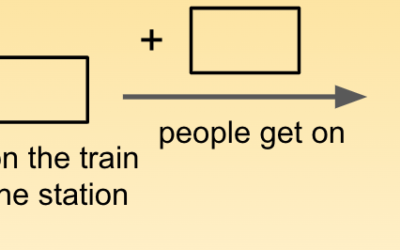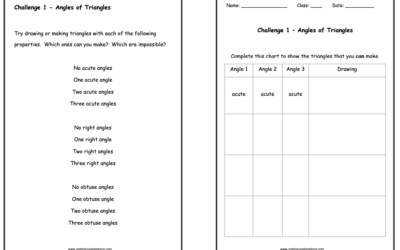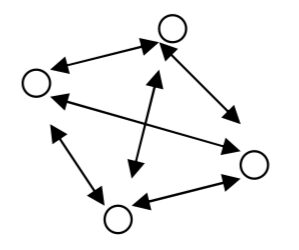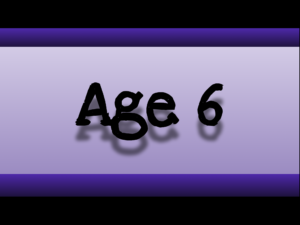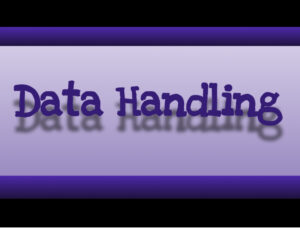Below you will find a list of activities that may be suitable for this age group. Please remember, however, that a child’s ability to engage with any activity will depend more on their prior experience and understanding than on their chronological age. Please, therefore, also browse the activities for adjacent age groups.
Cubes, Mice and Elephants
Maths turns up in surprising places! This unit explores the intriguing question of why mice get cold more quickly than elephants. In exploring this, we need to understand volume, surface area, and...
The Volume of Water
This activity establishes, through practical investigation, the equivalence of millilitres and cubic centimetres. Important Note: Teacher or parent guidance for using these slides can be found in...
Equivalent Measurements
This exploration is designed to secure the skills needed to convert measurements in metres and centimetres to the same format to allow comparisons to be made. Important Note: Teacher or parent...
Volumes of Cuboids
This activity introduces the concept of volume as the space taken up by a solid shape and explores how volumes can be compared by counting cubes. Once we have learned the concepts, we are given an...
Capacity Scales
This unit looks at a variety of different scales and develops the skill of reading them, by working out what the intervening marks represent between various numbered marks.The exploration variously...
Addition Puzzles
This activity is aimed at children who have mastered the standard written method of addition and are looking for a greater challenge. The various tasks give lots of practice of the addition skill as...
What can we discover about factors and prime numbers?
This activity is an open exploration into the factors of different numbers, and the links with prime numbers. It would sit well at a point where pupils are familiar with the multiplication triangle...
What can we discover about multiples?
This activity is an open exploration into the multiples of different numbers, and their links with other multiples. It would sit well at a point where pupils are familiar with the multiples of 2, 5...
Before & After Problems
Using a diagram is a really important problem-solving strategy. Depending on the type of problem, different diagrams will be useful. This exploration looks at one group of problems - ‘before and...
How Big is the Room?
This activity begins with an open group challenge to find out how big the room is. This naturally leads into learning about measurement equivalences and averaging. There is enough material in the...
Coordinates, Points and Lines
This activity is designed to develop children’s vocabulary and understanding of coordinates by exploring what happens when different groups of points with patterns in their coordinates are plotted...
Tables Quiz Speed Game
Once children have learned a series of multiplication tables they need to be able to quickly answer a mixed selection of questions. This game is designed to build their skills in doing this at...
How Many Different Kinds of Triangle Are There?
How many different kinds of triangle are there? Can you have a triangle with two obtuse angles? These and other questions are all explored in this practical investigation using geostrips (or...
How Big are Cuboids?
This is an open-ended extended exploration designed to be used over multiple weeks. Each section builds on the learning from the previous one but is does not need all to be completed at once. It...
Past or To?
A simple game which REALLLY helps children who are struggling to learn to tell the time. 5 minutes a day should make a real impact if you follow the rules carefully!
Shadow Clocks
Investigate how the length and direction of a shadow change during the course of a day. Learn about compass directions, symmetry, practical measurement using a metre stick, time (am/pm) and use of a...
Numbers Between Numbers
Explore where simple fractions and decimals sit on the number line and how they relate to each other.
How Big is the Room?
How do you introduce decimals to young children? This practical investigation works a treat, and also gives you the opportunity to discuss accuracy in measuring, averages and perimeter!
Handshakes, Cards, Roses and Triangles
An investigation into four related problems which all generate number patterns linked to the triangular numbers: 1, 3, 6, 10 etc. Consolidates pupils' use of problem-solving strategies such as...
Multiplication Rectangles and Factor Rainbows
An engaging investigation into multiplication and the concept of factors. Investigate which numbers have few factors and which have lots. Explore square numbers and look at the ‘specialness’ of the...








